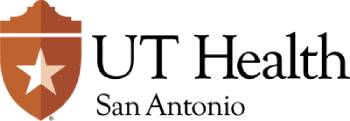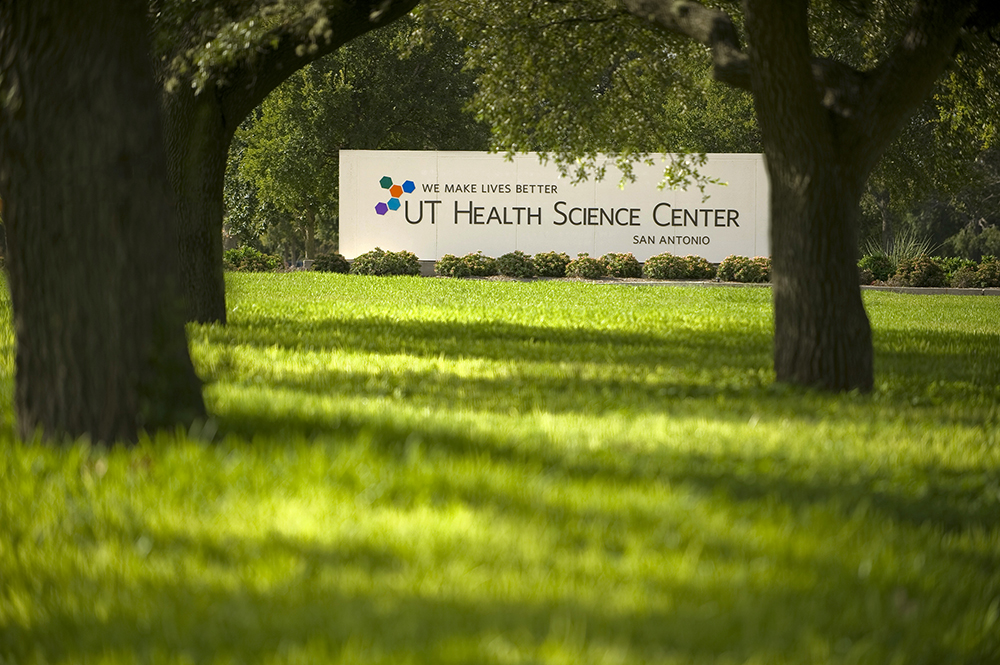Proof's in the pepper
 Discovery of pain-causing compounds leads to new nonaddictive painkillers
Discovery of pain-causing compounds leads to new nonaddictive painkillers
A substance similar to capsaicin, which gives chili peppers their heat, is generated at the site of pain in the human body. Scientists at The University of Texas Health Science Center at San Antonio have discovered how to block these capsaicin-like molecules and created a new class of nonaddictive painkillers.
The senior investigator is Kenneth Hargreaves, D.D.S., Ph.D., professor and chair of the Department of Endodontics in the Dental School at the UT Health Science Center. Amol M. Patwardhan, M.B.B.S., Ph.D., a graduate of the Health Science Center’s Department of Pharmacology who worked under Dr. Hargreaves’ supervision, is the lead author. The findings were published April 26 in The Journal of Clinical Investigation.
"Nearly everyone will experience persistent pain at some point in their lifetime," Dr. Hargreaves said. "Our findings are truly exciting because they will offer physicians, dentists and patients more options in prescription pain medications. In addition, they may help circumvent the problem of addiction and dependency to pain medications and will have the potential to benefit millions of people who suffer from chronic pain every day."
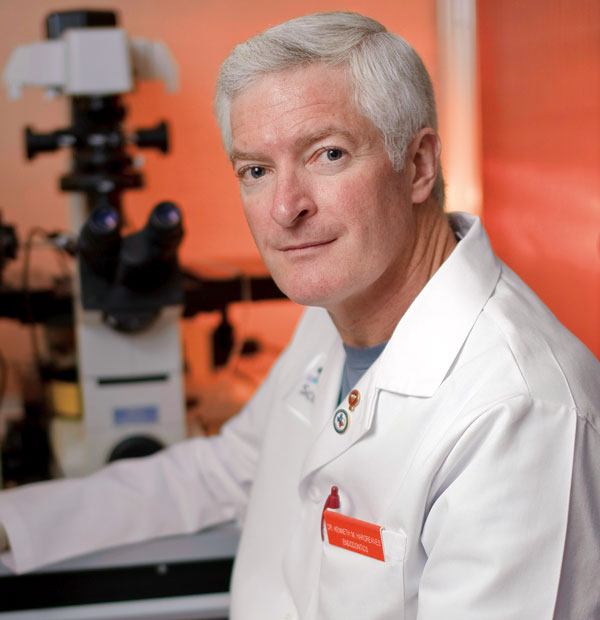
"Capsaicin is an ingredient in hot chili peppers and causes pain by activating a receptor called transient potential vanilloid 1 (TRPV1). We started out seeking the answer to the question "Why is TRPV1 consistently activated in the body upon injury or painful heat? We wanted to know how skin cells talk to pain neurons," Dr. Hargreaves said. "What we found was much more surprising and exciting. We have discovered a family of endogenous capsaicin-like molecules that are naturally released during injury, and now we understand how to block these mechanisms with a new class of nonaddictive therapies."Researchers used cells from laboratory mice that were heated in a water bath at temperatures greater than 43 degrees Celsius. The degree of heat used was significant because the human body normally begins to feel discomfort and pain at 43 degrees Celsius and higher, Dr. Hargreaves noted.TRPV1 resides on the membranes of pain- and heat-sensing neurons. When a person eats a hot chili pepper, for example, he immediately feels a burning sensation because the capsaicin, the primary ingredient in the chili pepper, has activated the TRPV1 protein in the pain neurons. In high concentrations, capsaicin can also cause a burning effect on other sensitive areas of the skin.
The fluid from the heated cells was then applied to sensory neurons cultured from two sets of laboratory mice, including one set of animals in which a gene was deleted or "knocked out." Neurons from the wild type (non-altered) mice were sensitive to capsaicin, the main ingredient in chili peppers. The neurons of the knockout mice, in which the TRPV1 gene was deleted, were not sensitive to capsaicin and were used as the control.
"We found that in the cells heated at greater than 43 degrees Celsius, the pain neurons showed tremendous activity in the wild type, but not in neurons from mice that lacked TRPV1," Dr. Hargreaves said. He indicated that this novel phenomenon was taking place because the cells, in response to the heat, began to create their own natural endogenous capsaicins, which they later identified as a series of compounds or fatty acids called oxidized linoleic acid metabolites (OLAMs).
Linoleic acid is one of the most abundant fatty acids in the human body. Under conditions such as inflammation, low blood pressure and some other illnesses, linoleic acid is rapidly oxidized to form biologically active metabolites.
"This is a major breakthrough in understanding the mechanisms of pain and how to more effectively treat it," Dr. Hargreaves said. "These data demonstrate, for the first time, that OLAMs constitute a new family of naturally occurring capsaicin-like agents, and may explain the role of these substances in many pain conditions. This hypothesis suggests that agents blocking either the production or action of these substances could lead to new therapies and pharmacological interventions for various inflammatory diseases and pain disorders such as arthritis, fibromyalgia and others, including pain associated with cancer."
The research has led Dr. Hargreaves’ team to develop two new classes of analgesics using drugs that either block the synthesis of OLAMs or antibodies that inactivate them. These drugs could eventually come in the form of a topical agent, or a pill or liquid that could be ingested, or in the form of an injection. Both approaches have the potential to block pain at its source, unlike opioid narcotics that travel to the brain and affect the central nervous system.
Co-authors of the study with Drs. Hargreaves and Patwardhan from the UT Health Science Center San Antonio are: Armen N. Akopian, Ph.D., assistant professor of endodontics; Anibal Diogenes, D.D.S., Ph.D., assistant professor of endodontics; Susan Weintraub, Ph.D., professor of biochemistry; and Nikita Ruparel, D.D.S., Ph.D., a graduate student in the Department of Cellular and Structural Biology. Co-authors from the University of Colorado Health SciencesCenter are Charis Uhlson, a research associate, and Robert Murphy, Ph.D., professor of pharmacology.
Strength in neighbors

UT Health Science Center partners with community to make lives better
It’s not incidental that the UT Health Science Center is located in San Antonio. From the beginning, the Health Science Center was created to be an integral part of this Texas city, to draw strength from its community even as it gives back.
It doesn’t matter whether Health Science Center faculty members are training future health professionals, treating illness or conducting world-class research. They have a single objective: to make lives better, worldwide and especially in San Antonio and South Texas.
Along with education, clinical care and research, there is a fourth part to the Health Science Center’s mission: community service. The university is deeply committed to San Antonio, and its involvement in the community takes many shapes.
It can mean sending doctors and students into the community to provide medical care and increase health awareness, particularly among vulnerable populations, with the goal of improving the health of San Antonio as a whole. It can mean researching the specific health needs of those who live here so those needs can be better addressed in the future. Sometimes, it means reaching out to bright young San Antonians of all backgrounds to encourage them to consider careers in the health professions.
This service not only benefits the community, but it also strengthens the university. A deep understanding of the people it serves allows the Health Science Center to provide better, more culturally competent care that truly meets the needs of this community.
Through community service, the Health Science Center gets to know its neighbors.
Voelcker Fund establishes new teacher biosciences academy

Honoring, the legacy of the late Max and Minnie Tomerlin Voelcker, the Max and Minnie Tomerlin Voelcker Fund continues to support biomedical research at the UT Health Science Center San Antonio. To date, transformational gifts totaling more than $10 million have focused on programs that cultivate innovative research and education and prepare the next generation of bioscience leaders in San Antonio and South Texas.
This year, the Voelcker Fund trustees contributed $445,500 to establish the Max and Minnie Tomerlin Voelcker Biosciences Teacher Academy. By focusing on teacher professional development, the Teacher Academy provides an additional strategy for improving science education, and is synergistic with the Voelcker Biomedical Research Academy for high school students that the Voelcker Fund established at the Health Science Center in 2009.
Michael Lichtenstein, M.D., M.Sc., professor of medicine in the Division of Geriatrics, coordinates the program, which targets K-12 science, math and health teachers. A core of education development specialists serve as the program’s key support.
"We are grateful for the confidence the Voelcker Fund has placed in us through this grant. The trustees truly understand the strong link between education, opportunity and health in San Antonio," Dr. Lichtenstein said. "We must continually improve the education of our children. This is an essential step in building a better workforce, preparing the research and business leaders of the future, and discovering and testing the best means of improving the health of our region. The Voelcker Teacher Academy allows us to work toward improving student achievement through the professional development of teachers, leveraging the significant impact each teacher has on generations of students."
This summer, five teachers were selected for the Teacher Academy and took part in an intensive six-week program on the Health Science Center campus. Participants used the university’s state-of-the-art laboratories and facilities to develop math and science curricula in areas specific to health conditions that impact the San Antonio and South Texas community. They also learned new techniques to encourage and guide their students toward graduation, pursuit of advanced degrees and careers in bioscience research.
Pictures of health

Researchers from the UT Health Science Center want to know how to inspire adolescent girls to be more physically active - a change that could boost the girls’ health now and throughout their lives. So they went straight to the source.
Their research collaborators now include dozens of Girl Scouts, ages 11 to 14, from the San Antonio and Edgewood Independent School Districts. Researchers outfitted the girls with cameras, global positioning system devices, laptops and journals and asked them to photograph anything that makes it easier or harder to be physically active in their communities.
The project was conceived by the Institute for Health Promotion Research (IHPR) at the UT Health Science Center. But researchers took a relatively hands-off approach, letting their community partners tell them what was needed. Those partners included Girl Scouts of Southwest Texas, the Edgewood Family Network, community leaders, parents and the girls themselves.
"It’s not a top-down research project - it’s a community collaboration," said Deborah M. Parra-Medina, Ph.D., M.P.H., professor of epidemiology and biostatistics. "They will be owners of the outcome as well."
Physical activity behaviors are formed early in life, so it’s important to reach girls early. Researchers plan to use the girls’ photos and other information from the community to devise new strategies to get girls moving. They plan to incorporate low-cost mobile and wireless technology, like text-messaging.
"What would it take to help girls be more active?" said Laura Esparza, M.S., project coordinator for the IHPR. "Also, what can we, as a community, do to support girls’ desires to be physically active?"
Building bridges at home and abroad
Teenage mothers at the Seton Home residential facility learn about breastfeeding from UT Health Science Center medical and nursing students. Another group of students runs a summer program that encourages kids to make healthy choices in nutrition, fitness, relationships and other aspects of their lives. Still others work in free clinics that provide medical care to the homeless and recovering drug addicts.
All of these efforts and many more are led by the Center for Medical Humanities & Ethics, which spearheads many of the service-learning opportunities available to UT Health Science Center students, serving as a bridge between the university and its community.
For Ruth Berggren, M.D.,director of the Center for Medical Humanities & Ethics, it’s about nurturing students’ innate empathy through years of difficult training, or "keeping the flame alive." She believes community involvement is one of the best ways to cultivate compassion in future health care providers.
"When students become engaged in problem-solving within the community, they develop a real-world understanding of the social determinants of health," Dr. Berggren said. "Empathy becomes a reality for them in a way that cannot be replicated in a classroom setting. Ethical decision-making capacity is enhanced, and many students find deeper personal meaning in their career choices."
The Center for Medical Humanities & Ethics also mentors students in global health, giving them opportunities to serve communities in resource-poor settings in Ethiopia, Haiti and even the Texas-Mexico border. Such experiences are transformational, and the Center recognizes the importance of students being fully engaged members of communities locally and abroad.
The Center’s efforts led to national recognition: The UT Health Science Center was named to the 2009 President’s Higher Education Community Service Honor Roll.
Ravdin ready to raise the bar
 Like most things worth doing well, it took time to build a comprehensive clinic in San Antonio dedicated to breast health.
Like most things worth doing well, it took time to build a comprehensive clinic in San Antonio dedicated to breast health.
What began as the vision of local health care and community leaders decades ago resulted in the Comprehensive Breast Health Clinic at the UT Health Science Center’s Cancer Therapy & Research Center (CTRC). The physical structure was completed in 2006, offering patients diagnosis, treatment and a wide range of services focused on improving quality of life - all under one roof. Creating an exceptional team of breast care specialists took four more years.
At a clinic open house this past spring, CTRC Executive Director Ian M. Thompson Jr., M.D., formally announced the recruitment of Peter Ravdin, M.D., Ph.D., as the director of the Breast Health Clinic.
"We knew we needed someone renowned in both research and clinical care to lead by example and to take our program to the next level because that is what our patients deserve," Dr. Thompson said. "We found that expertise in Dr. Ravdin."

Ravdin’s return
In March 2010, Dr. Ravdin rejoined the Health Science Center faculty after eight years of working independently and most notably on developing "Adjuvant!," a widely used computer tool that estimates benefits and risks of chemotherapy after breast cancer surgery. In April Dr. Ravdin accepted the American Society of Breast Diseases 2010 "Pathfinder" award that celebrates the innovators who have combined biological intuition, clinical and translational research, and clinical practice with an interdisciplinary understanding to advance the fight against breast disease and breast cancer.
Dr. Ravdin served on the Health Science Center faculty from 1987 until 2002, wearing a number of hats that prepared him for his new role. He directed major clinical trials, including one leading to government approval of the commonly used breast cancer drug Taxotere. He served as an executive officer of the Southwest Oncology Group, one of the largest National Cancer Institute-funded cancer clinical trial cooperative groups in the U.S. with an operations office based in San Antonio, and was the CTRC’s chief of staff. Then, as now, Dr. Ravdin was a member of the executive committee of the San Antonio Breast Cancer Symposium, the world’s largest annual scientific meeting devoted to breast cancer research and treatment. In 2009, the symposium drew about 8,500 participants from 93 countries.
"The CTRC is a superb environment to deliver and advance the best and most state-of-the-art cancer care," Dr. Ravdin said. "Our technically excellent and compassionate physicians practice in all breast cancer care specialties. I’m proud to be back at one the country’s top programs for developing new treatments, and to work with world-class scientists whose research and talent will benefit the future of cancer prevention and treatment."
By the time 45-year-old Sandra Flores arrived at the CTRC May 4, she knew she had breast cancer. A few months earlier, she’d discovered a painful lump in her left breast. A mammogram and biopsy confirmed the diagnosis. A stay-at-home mother of two children, ages 7 and 16, Flores worked part time managing office duties for her husband’s construction company. She had no health insurance. Representatives from a community assistance program suggested she might qualify for financial assistance through CareLink at the University Health System. CareLink’s sliding-scale fee system calculated her payments based on her family’s income. Her primary care physician through CareLink referred her to the CTRC and Dr. Ravdin.
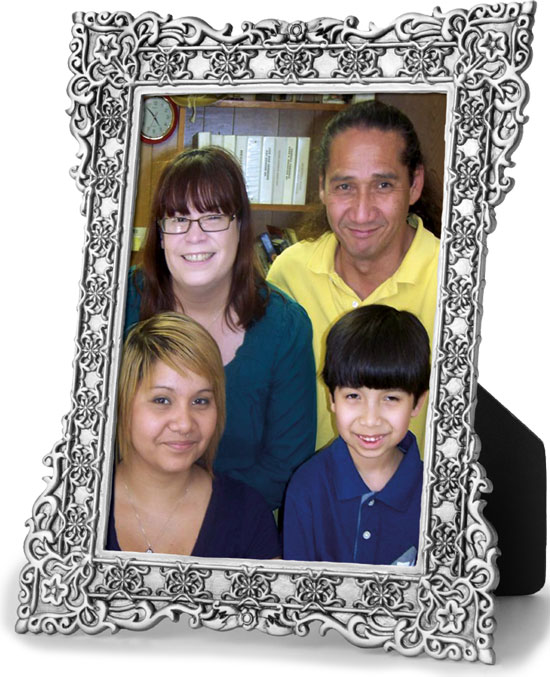
"Once I got to the CTRC, things fell into place very quickly," Flores recalls. "Dr. Ravdin scheduled a lumpectomy for the following Tuesday. The physicians told me I would likely need radiation after the surgery. I saw three doctors in one day and didn’t have to leave the building. I felt 1,000 percent better."
Flores’ lumpectomy, performed at University Hospital May 11, left her with a "small empty space" in her breast. Fortunately, Flores’ cancer, an aggressive type called invasive ductal carcinoma, was discovered at Stage 2 of 4 and had not spread to her lymph nodes. Two days later, all members of the CTRC team contributing to Flores’ care discussed the results of her surgery and pathology reports at their weekly case conference. They recommended that she follow the surgery with chemotherapy and then radiation. The next week, Dr. Ravdin sat down with Flores and used a computer program he developed called "Adjuvant!" to discuss the benefits and risks of Flores’ various treatment options.
"I learned that without chemotherapy, there was a 35 percent chance that the cancer would return," Flores said. "With chemo, there was a 17 percent chance. It was sobering to hear the odds. I had a bad night. But you have to know where you are in order to know what you need to do."
Flores added, "For me, to face this obstacle, I know I’m in the best place I can be here at the CTRC."
CTRC Breast Health Clinic: Anatomy of comprehensive care
Diagnosis
As a result of a partnership between the CTRC and University Health System, patients are able to receive their mammogram results before they leave the clinic.
Genetics
If a patient has a family history of breast or ovarian cancer, she is evaluated by a genetic counselor and physician who help plan a risk reduction strategy or assist in treatment planning.
Treatment and reconstruction
Many breast cancer patients are cured by surgery. To reduce the risk of recurrence and improve life expectancy and cure rate, a medical oncologist may recommend adjuvant therapy (hormones, chemotherapy and/or biological therapy). A radiation oncologist may recommend radiation treatments.
Discovery and prevention
Breast Health Clinic physicians are faculty researchers and educators at the UT Health Science Center. Their collaboration and exchange of knowledge and ideas encourages the translation of research into novel therapies that benefit patients. All patients are given the opportunity to participate in clinical trials that evaluate experimental treatments.
Quality of life
A patient’s quality of life is a priority at the CTRC. Members of the Breast Health Clinic team who assist patients in achieving a positive experience include insurance coordinators, patient navigators, social workers, financial assistants and fitters for breast prostheses, wigs and lymph edema sleeves. Staff members also organize recurring support groups and activities for patients.
For more information or to schedule an appointment at the Comprehensive Breast Health Clinic, call (210) 450-3000.
A second chance – worth a smile!

The X-ray revealed a black void. What was once colonized by lively cells, tissue and nerves was vacant and still. The pulp tissue (nerves) inside 12-year-old Cody Nelson’s tooth was dead - the result of a biking accident. He’d been speeding down a hill when his tire hit a bump, sending the handlebars into his face.
"I touched my mouth and saw this white stuff. Then, I felt my front tooth and half of it was gone," he said. He’d fractured his right permanent front tooth, a central incisor that assists in chewing and is one of the most visible in the mouth.
Accidents like Cody’s are common. The American Dental Association estimates that one-third of all dental injuries are related to sports or recreational activities. In addition, other sources indicate that more than 7.3 percent of U.S. children, by age 17, have lost at least one permanent tooth to decay.
Normally, a child might live with an injured or infected tooth. Even if a dentist rebuilds the missing portion of a chipped tooth, using a tooth-colored resin, the interior of the tooth’s root remains lifeless and vulnerable to infection. Root canal therapy would be the only option, but this treatment means that the root of the tooth will no longer develop, and will be at risk for further fractures for the remainder of the patient’s life.
Researchers in the Dental School at the UT Health Science Center at San Antonio are helping to solve the problem. For the first time ever in a clinical setting, researchers in the Department of Endodontics, have proven that stem cells, abundant in the soft tissue surrounding children’s teeth, can be used in an endodontic procedure to regenerate the teeth’s own tissue and cells.
Cody Nelson was one of 12 patients ages 7 to 16 who participated in the study led by Anibal Diogenes, D.D.S., M.S., Ph.D., assistant professor in the Department of Endodontics at the Health Science Center.
When a child loses a portion of tooth to a cavity, or as in Cody Nelson’s case, to an injury, inflammation and bacteria can be present. The first step in the Health Science Center study was to disinfect the tooth canal and administer antibiotics.
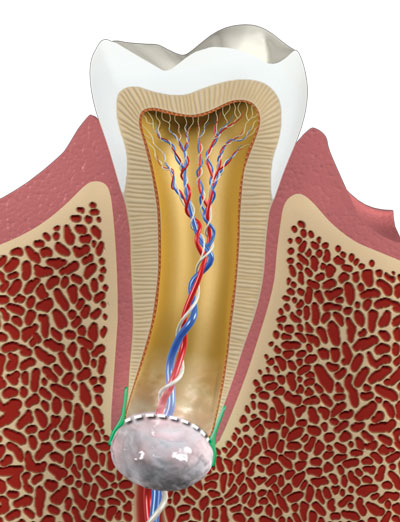
The grey-colored structure at the end of the tooth’s root is the apical papilla, which is present in developing permanent teeth and is the precursor tissue to the pulp of adult teeth. Unlike the pulp in adult teeth that may undergo necrosis due to infection, the apical papilla resists advanced infections.
Illustration by Sam Newman, Multimedia Services
Cody returned to the Dental Clinic in a month where clinician’s flushed and cleaned the tooth canal. After applying an anesthetic, dentists used a special technique to evoke bleeding in the apical papilla, which is the soft tissue surrounding the end of the root in developing permanent teeth. The apical papilla is the precursor tissue to the pulp of adult teeth. Unlike the pulp in adult teeth that may undergo necrosis due to infection, the apical papilla resists advanced infections. Thus, stem cells can be released from this structure and brought into the interior of a tooth to re-populate and restore the damaged tissue.
Standard blood samples were also drawn from each study participant.
"We needed to answer several questions," Dr. Diogenes said. "If we caused blood cells from within the apical papilla to emerge, would they carry with them stem cells? And could those stem cells stimulate the regeneration of dead tissues in a tooth? We compared the blood samples from the teeth with the standard blood samples drawn from each patient."
What they discovered was exciting. After one month of treatment, blood carried from the apical papilla into the tooth had a concentration of stem cells up to 700 times higher than in the systemic blood samples.
"We found that by causing bleeding in the apical papilla, we were able to release stem cells resulting in their delivery to the tooth canal. In addition, we demonstrated that the cells originated from the apical papilla and that they did not come from anywhere else in the body."

Under high-powered magnification, stem cells (in green) can be seen among the cells (in blue) of the apical papilla and the blood vessels are seen in red. The apical papilla stem cells are capable of mediating the regeneration of tissue, and restore immune function to a necrotic tooth. Micrograph courtesy of Michael Henry, D.D.S., Ph.D., Department of Endodontics
Dr. Diogenes said the process provides the ideal environment for regeneration or restoring vitality to the tooth pulp. "All of the elements of bioengineering are present," he said. "Bleeding is provoked, which brings the stem cells into the tooth canal. The blood clots, naturally forming a fibrin scaffold (a network of proteins that preserve living tissue). Platelets and the tooth structures provide the growth factors needed. Finally, the stem cells stimulate the regeneration of tissues, which are then supported by the scaffold and the growth factors."
What was once dead tissue is brought back to life. More importantly, Dr. Diogenes said the tooth is immunocompetent, meaning it can defend itself from infection.
"The further development seen means a stronger reliable tooth that functions as an uninjured tooth," Dr. Diogenes said. "The process takes several months, but positive vital responses have been seen in as little as six months."
The study was funded by the American Association of Endodontists Foundation and by the Department of Endodontics at the UT Health Science Center and was published in the Journal of Endodontists. The American Dental Association is creating treatment codes for this new procedure that Dr. Diogenes hopes will become widely used in dental clinics across the country.
Co-investigators on the study from the Department of Endodontics at the Health Science Center were Kenneth Hargreaves, D.D.S., Ph.D., Michael Henry, D.D.S., Ph.D., and Tyler Lovelace, D.D.S.
Dr. Diogenes and his team are now studying the same process in adult patients.
"We are excited about these findings because not every child is a candidate for a root canal," he said. "If an affected tooth is not fully formed, further development is not viable after conventional root canal therapy. During a root canal, dentists fill a tooth with an inert material. Therefore, the tooth can no longer develop," Dr. Diogenes said. "Only regenerative endodontics can restore vitality in the tooth. Instead of having to live with tooth loss and limited therapy options, we may now be able to offer this minimally invasive procedure, which costs about one-quarter of root canal surgery."
Kenneth Hargreaves, D.D.S., Ph.D., professor and chair of the Department of Endodontics at the Health Science Center, said Dr. Diogenes’ research represents translational science at its best.
"Anibal and his team are the first to demonstrate a clinical procedure that delivers a high concentration of mesenchymal stem cells into the root canals of disinfected teeth that literally regenerate tissue in actual patients." Dr. Hargreaves said. "These findings provide a foundation that will be incredibly important in guiding the translation of tissue engineering from the bench to the chair side. He and his team are among the leaders in this effort."
Laura Nelson, mother of study participant, Cody Nelson, said she was glad her son was among the first to benefit from this procedure.
"It’s amazing what the dentists at the Health Science Center’s Dental Clinic can do," Mrs. Nelson said. "We are lucky this research and these specialists are here in San Antonio. Cody can chew gum and eat apples just like before. He recently got braces too."
Cody said he thinks it’s "pretty cool," especially since he’s back to being an active 12-year-old and doing what he loves to do best - riding his bike.
To become a patient in the UT Health Science Center Dental Clinic, call
210-567-3217 or visit www.dentalscreening.com.
New facility for Dental School clinics approved
 The University of Texas System Board of Regents this year authorized a $95 million oral health care center at the UT Health Science Center San Antonio. The new four-level 172,000 gross-square-foot building will be named the Center for Oral Health Care at the MARC and will be constructed adjacent to the university’s Medical Arts & Research Center (MARC) on Floyd Curl Drive.
The University of Texas System Board of Regents this year authorized a $95 million oral health care center at the UT Health Science Center San Antonio. The new four-level 172,000 gross-square-foot building will be named the Center for Oral Health Care at the MARC and will be constructed adjacent to the university’s Medical Arts & Research Center (MARC) on Floyd Curl Drive.
The facility will improve dental education and training, and enable the Dental School to sustain its top-tier ranking, said William L. Henrich, M.D., MACP, president of the Health Science Center.
The proximity of the facility to the MARC outpatient medical care clinics will assist referrals and management of patients with oral health conditions, said Kenneth L. Kalkwarf, D.D.S., M.S., dean of the Dental School. The MARC is the flagship location of UT Health Physicians, the clinical practice of the Long School of Medicine at the Health Science Center.
"The Health Science Center’s schools work together to educate the entire health care team, and we are excited about the opportunity to care for the region’s oral health needs and conduct clinical research studies in a new facility that is closely interrelated with our medical colleagues," Dean Kalkwarf said.
The project is expected to be completed by the end of 2014.
Regional Academic Health Center celebrates 10 years of making lives better for South Texas

The Regional Academic Health Center (RAHC) is celebrating 10 years of making lives better for South Texas and the Lower Rio Grande Valley.
Join faculty, staff, students and the community for a special anniversary celebration at 6:30 p.m. on Thursday, June 14, in the courtyard of the RAHC campus, 2102 Treasure Hills Blvd. in Harlingen.
Since 2002, more than 1,000 medical students have completed rotations at the RAHC and nearly half of its residents have remained in the Lower Rio Grande Valley to practice medicine and care for the region’s diverse citizenry.

"The RAHC has played an instrumental role in training young doctors both from South Texas and beyond," said Roberto J. Hernandez, M.D., former resident. "The presence of medical students and residents may spark an interest in health care-related jobs in the community."
Community partnerships have been key in the success of the RAHC.
Through the generosity of the Robert J. Kleberg, Jr. and Helen C. Kleberg Foundation, residents can take part in the Kleberg Medical Scholars Program. Donors such as the Raul J. Tijerina, Jr. Foundation, allow students to study health problems affecting the Texas-Mexico border population.
"In areas where doctors, and particularly primary care physicians and various specialists, are lacking, the RAHC has been a catalyst for closing the gaps," said Leonel Vela, M.D., M.P.H., regional dean of the RAHC. "Great strides have been made during the past decade with the help of our community, and we look forward to expanding our education and research programs in the future."
RAHC’s road to achievement
- RAHC building is dedicated in 2002 at 2102 Treasure Hills Blvd.
in Harlingen.
- Third- and fourth-year medical students complete part of their medical education at the RAHC and its affiliated clinics and teaching hospitals in the Lower Rio Grande Valley.
- Since its establishment, more than 1,000 medical students have completed clinical clerkships and rotations at the RAHC.
- 38 physicians have completed their post-graduate training through the RAHC’s three-year internal medicine residency program.
- 17 out of 37 residents have remained in the Lower Rio Grande Valley and 32 have remained in Texas to practice medicine and care for the region’s and state’s diverse citizenry.
- Leonel Vela, M.D., M.P.H., regional dean
- Melba Sanchez, M.P.A., assistant dean
- Adela Valdez, M.D., assistant dean
- James Hanley III, M.D., founding director of the internal medicine residency program
